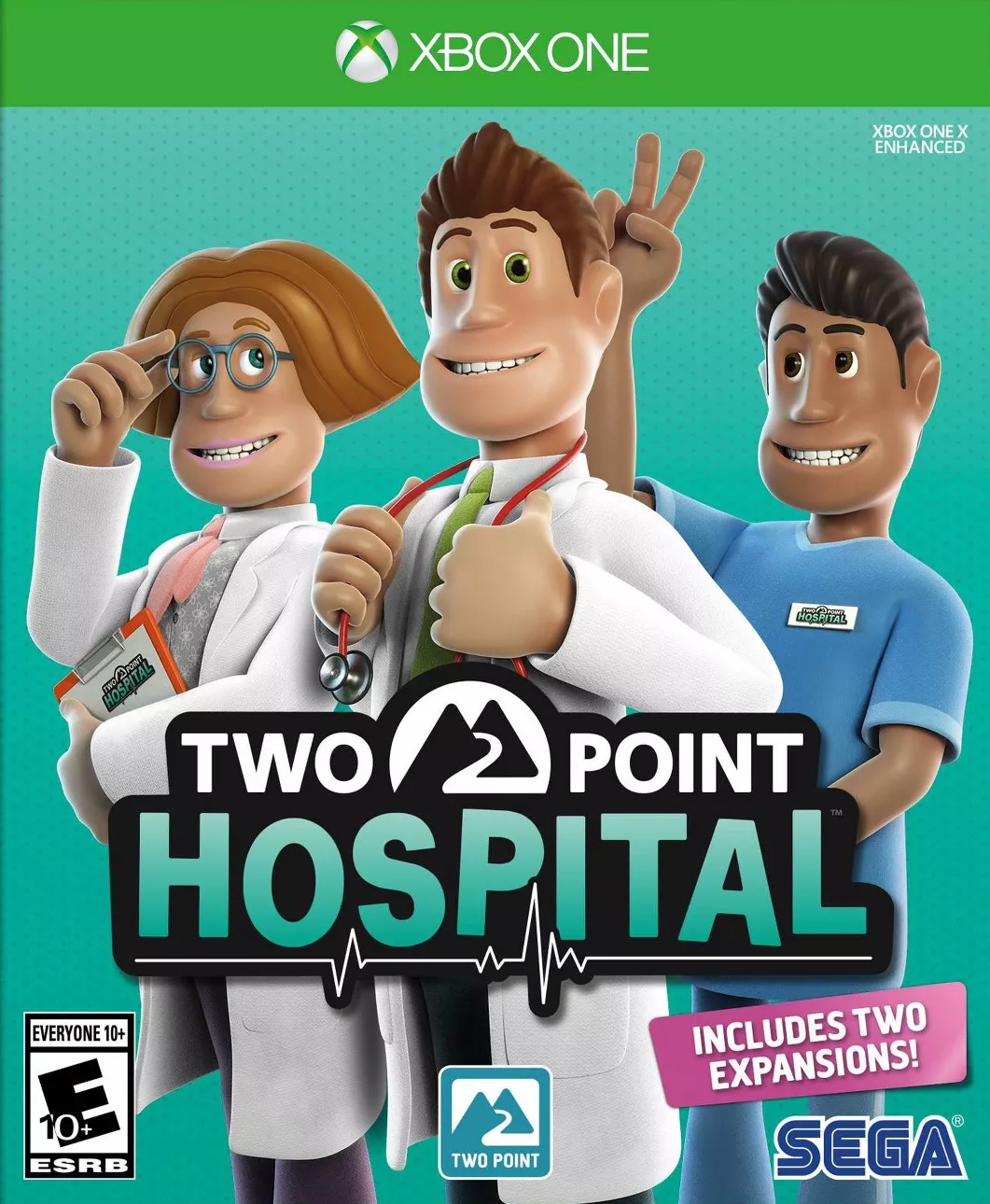Two Point Hospital
Developer: Two Point Studios
Publisher: Sega
Platforms: PlayStation 4, Xbox One (Reviewed), Switch, PC
Release Date: Available Now
Price: $39.99 USD – Available Here $59.95 AUD – Available Here
Overview
From the moment Two Point Studios revealed their first game, Two Point Hospital, longtime fans of simulation and management games had to instantly think of one game, Theme Hospital. Featuring a similar presentation and focus on being a bit of a comedic hospital management sim rather than a serious one, Two Point Hospital is even following the same release style of the Theme Hospital, as it was first released on PC and later ported to a console and now here we are with Two Point Hospital doing the same thing. So now that this unique game that hearkens back to a classic has made its way to consoles, did it successfully survive the trip?
Story
Now while there is no real story in Two Point Hospital we must mention that the comedy for this hospital simulator is spot on. Humor exists in nearly every aspect of the game, ranging from the craziness of the diseases that must be treated as well as how they are treated, such as having “lightheaded” patients have a light bulb taken off their neck and replaced with normal head, to the random traits that the staff can possess. Even some of the locations that players are introduced to have their own humorous little backstories about what players can expect in that location though perhaps the best part comes from the radio DJ that interjects every so often with a joke or humorous sponsor as well as the deadpan delivery of the hospital’s announcements over the speaker system.
Gameplay
Introduction to Two Point Hospital is a fairly simple affair as the first couple of hospitals that players are given to manage provide a suitable tutorial for many of the standard gameplay mechanics. Players will have access to nearly every aspect of hospital management as they will be able to hire all of the staff, of which there are doctors, nurses, assistants, and janitors, as well as build the various facilities needed to properly diagnose and treat a patient while also making sure everyone stays happy at the same time.
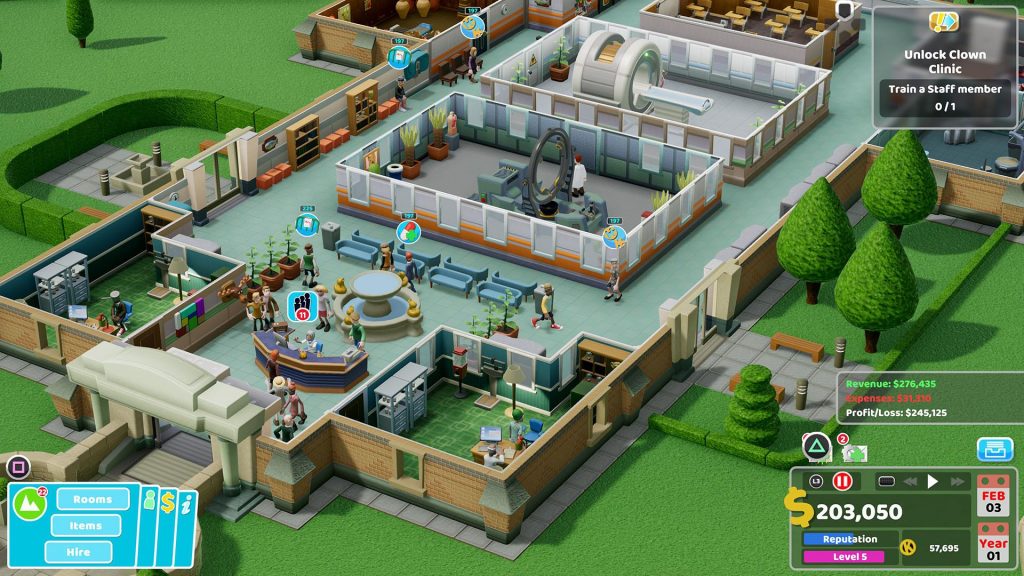
A patient’s journey through the hospital is quickly introduced as a reception desk helps admit them to the hospital where they will then visit the General Physician’s (GP) office who will then either diagnose them completely if they happen to suffer from an easy illness or be sent on through to numerous other diagnosis rooms that range from simply a few extra exams, runs on a treadmill, or even fluid tests until their illness can be diagnosed and they are then ushered forth for a hopeful cure. Nearly all of this journey is handled directly by the staff that the player hires for the hospital and it is up to the player to make sure everything is running as smooth as possible.
Nearly every hospital begins with an empty floor plan that the player will then fill with various rooms that all have a specific purpose. All rooms have a minimum size requirement and feature a specific item or three but once fulfilled a single room can be as large and filled with as many decorations as the player sees fit. In fact, there are even some bonuses that come with having large furnished rooms as staff assigned to that room will be happier at work and some items can even help boost diagnosis and treatment percentages.
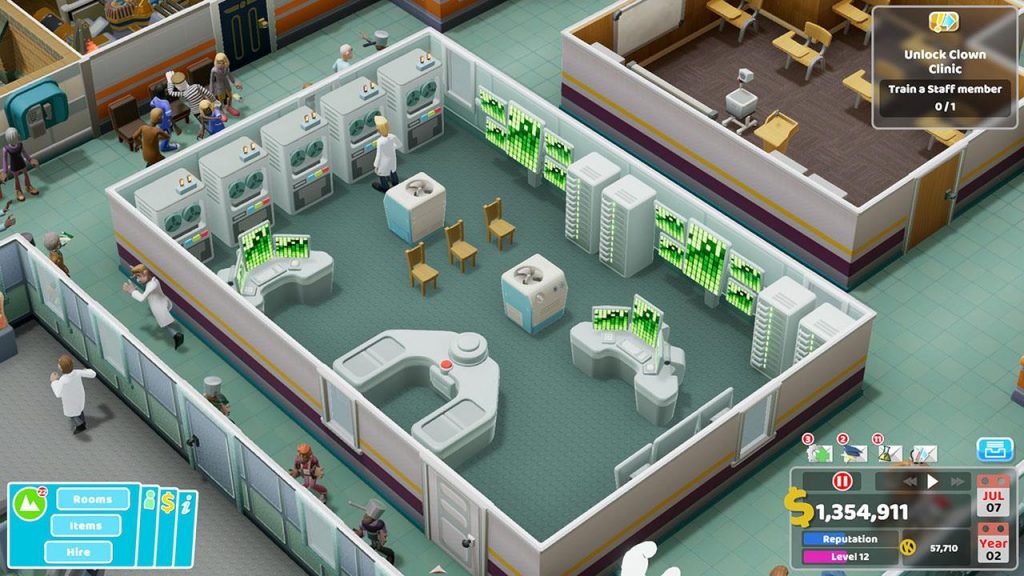
It is interesting to note that while there are not many positions that players will need to hire for each of the four job types has a special set of skills and unique traits that can vary wildly from employee to employee and occasionally this can dictate the specialties that that character can take on. For example, a psychiatry skill is required to be a psychiatrist as a doctor or researcher for the research room and a janitor needs to be skilled at hunting down ghosts if they want to capture the ghost of a patient that died in the hospital. These are the more significant examples as these skills often provide simpler bonuses such as improved diagnosis or treatment, better stamina, and more while the traits range from making an employee grumpy who frustrates those around him or a green-thumb that waters plants when not busy.
One of the biggest challenges that the player will face in Two Point Hospital is the juggling act between making money and fulfilling the needs of the hospital. Staff will want promotions with increased wages the longer they remain employed and may threaten to quit if they are paid to little, bathrooms and vending machines must be scattered throughout to make sure patients and staff have access to the necessities though if they actually use them properly is often a flip of the coin thanks to some odd AI from time to time. Even things such as keeping the hospital warm or cool enough while making sure that everyone has a place to sit while hopefully staring at nice decorations will factor in to how long a patient may be willing to wait before storming off or potentially dying.
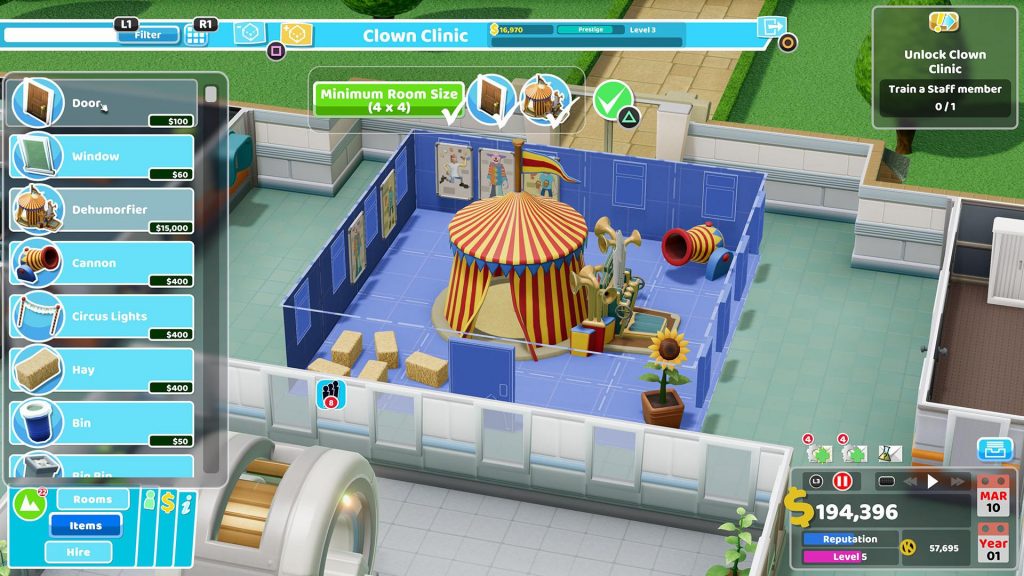
While playing through a hospital stage players will be given an initial set of tasks and then the ability to earn up to three stars in each location alongside a number of smaller dismissable tasks that come from management and staff. Earning the first star unlocks the ability to move to a new location but players can unlock additional items for their hospital as well as “Kudosh” to unlock special items, ranging from fancier vending machines to extra equipment for diagnosis rooms as they please which can make a few smaller tasks a bit easier.
As mentioned before, the initial couple of hospitals that players are assigned serve as introductions to many mechanics while the later hospitals all have special oddities that provide new challenges. These can range from frequent earthquakes that damage equipment, to only being able to hire doctors and nurses fresh out of med school with no skills, to even having a pandemic run through the hospital that infects patients who may already have another disease already. These little nuances help keep the game feeling fresh and add a bit of extra challenge to the game that can occasionally feel a bit too easy at times depending on how well the player gets the hang of the various quirks and requirements for that stage, though even then there is always the chance for things to swing south, especially in regards to patients who can, despite being properly diagnosed and treated, can still die at no fault of the player making for some occasionally frustrating RNG.
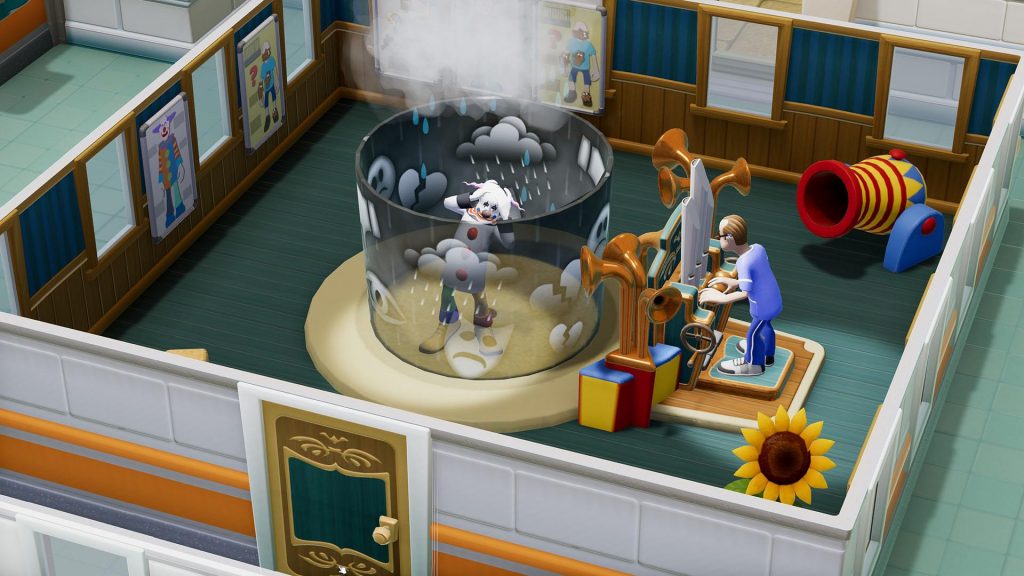
The biggest part of any PC release on consoles, especially a management game like this, is how well it makes the transition of being a mouse and keyboard game to one that can only be controlled with a controller and thankfully Two Point Hospital makes that transition quite well. Menus are easy to navigate with a single button press and it is even possible to copy an already built room and place an exact replica down if more of that specific facility is required which is a nice touch. The only issue that does come up often is being able to pinpoint an exact staff member or item as the cursor will often highlight numerous things at a time. Thankfully players can pause time when they want to if things end up spiraling out of control and require such direct input.
Visuals & Audio
The designs of the various human characters that walk around feel quite similar to Nick Park’s Wallace and Gromit style of presentation as characters are rounded and stylized in such a manner that their humorous diseases don’t look out of place. The world itself is a fairly standard run of the mill design and unfortunately a number of rooms that don’t feature odd disease curing equipment are very basic looking as well though players can decorate them with some odd decorations once unlocked, though even these are mostly simple and predictable as well which is a bit of a disappointment.

The soundtrack for the game features a nice collection of background music all handled by a humorous radio DJ that, alongside the female voice of the hospital’s announcements and narrator for new stages, is the only real dialogue in the game. These voices are handled quite well with both the DJ’s delivery and the deadpan nature of the announcements helping deliver an extra dose of humor on top of this hospital sim.
Overall
With such a fondly remembered simulator serving as its inspiration, Two Point Hospital manages to live up to expectations by delivering not only satisfyingly addictive gameplay loop of treatment and management but also one that is filled with a unique brand of humor that fans had hoped for. Add to that the fact that, for the most part, the transition to the Xbox One keeps an easy to use and understand interface and you have a great hospital management simulator that doesn’t take itself seriously and is all the better for it.
Capsule Computers review guidelines can be found here.


